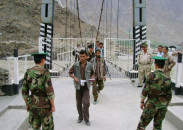'Half the work people do can be automated'
A McKinsey Global Institute study across 50 countries finds a potential impact of automation on 1.1 billion workers.

Robots carry trays of food at a restaurant in Jinhua, Zhejiang province, China, May 18, 2015. PHOTO: REUTERS
Instead of assessing the impact of automation on specific jobs, the study went to a more granular level by looking at the activities involved in various jobs. The logic is that every occupation has a range of activities, each with varying potential for automation.
McKinsey found that 49 percent of the activities people are paid to do in the global economy can be automated with “currently demonstrated technology.” That involves US$11.9 trillion in wages and touches 1.1 billion people.
Chinese AI robot takes on humans in reality TV show
The study encompassed over 50 countries and 80 percent of the world’s workers. China, India, Japan, and the US accounted for half of the total wages and employees. Not surprisingly, the two most populous countries, China and India, could see the largest impact of automation, potentially affecting 600 million workers – which is twice the population of the US.

Each job has different potential for automation, depending on the activities involved in it. Physical activities in structured environments as well as data collection and processing are most susceptible to automation. These are to be found mostly in manufacturing, retail, food, and hotel businesses.
Baidu’s family robot 'Little Fish' is a Chinese spin on Amazon Echo
The study says that less than 5 percent of jobs can be fully automated. But at least 30 percent of the activities can be automated in 60 percent of jobs.
In other words, it’s not just low-skilled workers who will be affected by automation to some degree, but also highly skilled and well-paying jobs. Many could lose their jobs, but for many others it will free up time for higher value work.
Watch Avatar-style South Korean manned robot take first baby steps
Businesses stand to get performance benefits not only from substitution of labor, but also from higher productivity and quality of work. But the pace of automation will vary from sector to sector as well as country to country, depending on the workforce, policies, and many other factors.
This article originally appeared on Tech in Asia



















COMMENTS
Comments are moderated and generally will be posted if they are on-topic and not abusive.
For more information, please see our Comments FAQ